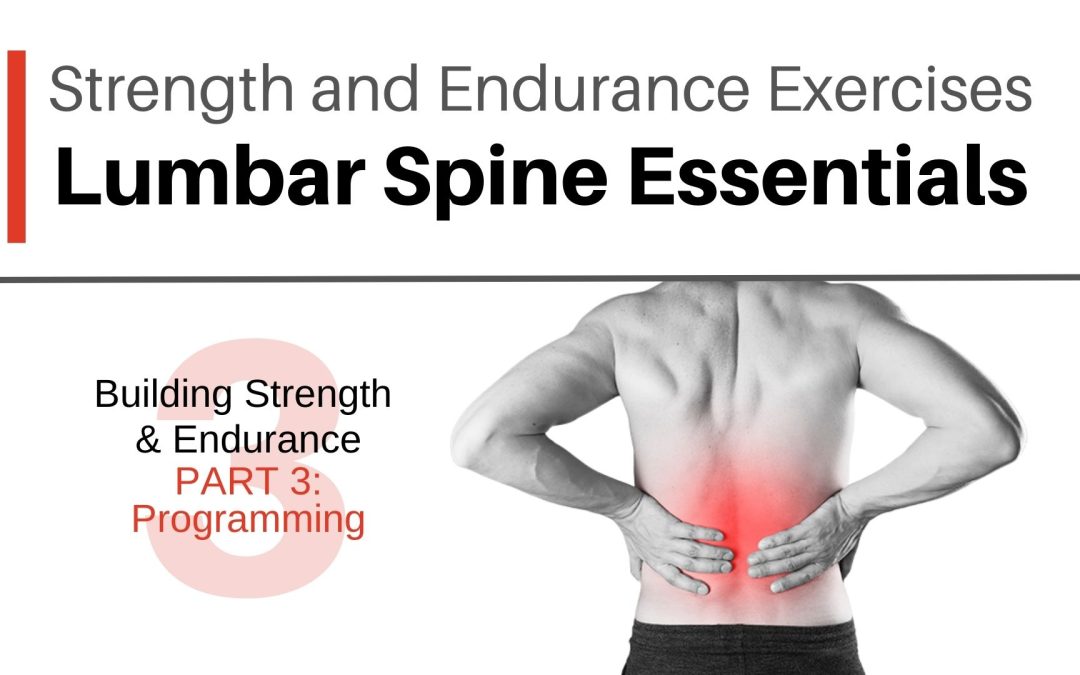In this article series we’ve been talking about essential exercise progressions for developing lower back strength and endurance. In Part 1 we talked about the limitations of traditional exercises like planks, side-bridges, bird-dogs, and bridges. Then, in Part 2, we introduced the key concept of using pelvic tilt based exercise to target the spine. But these weren’t just your simple, basic, mobility focused pelvic tilts. Instead, we need to add load and intensity to these movements to create a strength/endurance focus.
But when progressing to strength/endurance it’s not just the intensity that matters. Volume needs to be considered too. This really gets down to programming. And to build strength/endurance we need to add volume. We need to not just work harder, but also to work more. But remember, as intensity and volume increase we also need to program rest and recovery.
Work harder, but rest and recovery matters too!
Think about performing squats or biceps curls at the gym. To build strength I need to challenge myself, and work hard to fatigue the muscle. So I need to make the muscles work hard with each set. And I would expect to perform several sets to fatigue in the same training session.
But I wouldn’t perform these higher load exercises every day. I need to allow the body to recover between training sessions. It is the same with our Low Back Strength/Endurance protocol.
So the target is 2-3 times per week. This allows a minimum of 1 rest day in between. But remember building strength takes higher effort.
REMOM – Rehab Every Minute On The Minute
Now you can certainly perform these exercises using specific sets and reps as your targets (for example, 3 sets of 8-10 repetitions). But I prefer to prescribe these with a time based quota. This is where the REMOM (Rehab Every Minute On The Minute) comes in.
This concept piggybacks off a popular workout scheme, the EMOM (Every Minute On The Minute). It’s a common protocol used in Crossfit gyms. The idea is that we’re basing our exercise programming on the clock.
But in my REMOM version there is no counting reps. It’s just working as hard as you can for the minute. And when that minute is up you move onto the next exercise, and work hard for that minute… and so on. So we’re stealing this concept here (but I add the “R” to make it a rehab focus).
So a program would look something like this (remember, we reviewed the specific exercises in Part 2, so you can reference that article as needed):
Sample Low Back REMOM:
4 Rounds (1 minute each exercises: 12 minutes total)
- Quadruped Pelvic Tilt with 8-10s End Range Hold
- Quadruped Lateral Pelvic Tilt with 8-10s End Range Hold
- Rest (optional)
As a side note, this scheme can be manipulated to include accessory strength exercises as well. So instead of just these 2 lower back exercises I may also include a hip or thoracic exercise as well. For example, we would modify the prescription to be 3 rounds of 4 exercises, for a total of 12 minutes. You get the idea.
I like this scheme for a few reasons. First, it’s the psychology of it.
Let’s be honest. A lot of patients aren’t compliant with their exercises. Especially strength/endurance exercises that require them to exert some effort. So, for the vast majority of patients, it is much easier (or at least it comes across as an easier and more reasonable request) to spend 12-15 minutes 2-3x times per week. It makes it seem like a less daunting task.
Second, it allows the patient/client to keep focused on form and execution. Remember, the conscious brain can only focus on so much at a time. So instead of spending valuable mental resources on counting reps, we can focus on being more focused and deliberate on the muscles and motions.
This is a big deal, because when training the lumbar spine it is critical that the exercise stimulus is directed to the intended joints.
But as we add load and intensity to these movements there is a tendency for form to suffer. It is common to revert back to compensatory patterns like moving more through the hips or thoracic spine. These compensatory patterns often feel more “intense” to the patient/client, but they are just transferring the stimulus to other muscles and joint segments. This defeats the purpose of what we are trying to do.
What about higher level athletes, or patients with high level fitness level?
In my experience, the strength/endurance focused pelvic tilt exercises we have discussed so far are suitable and provide ample challenge for 90% of patients/clients. But there are situations when we may see patients or clients who need even more advanced exercises. Examples here may include higher level athletes.
For these patients we can take this concept a step further to increase exercise load and intensity even more. I refer to these exercises as “Lumbar Curls”. These can be done to specifically focus on lumbar flexion, extension, or lateral flexion. That will be the topic of the fourth and final article in this series.
It’s coming soon, so stay tuned.







